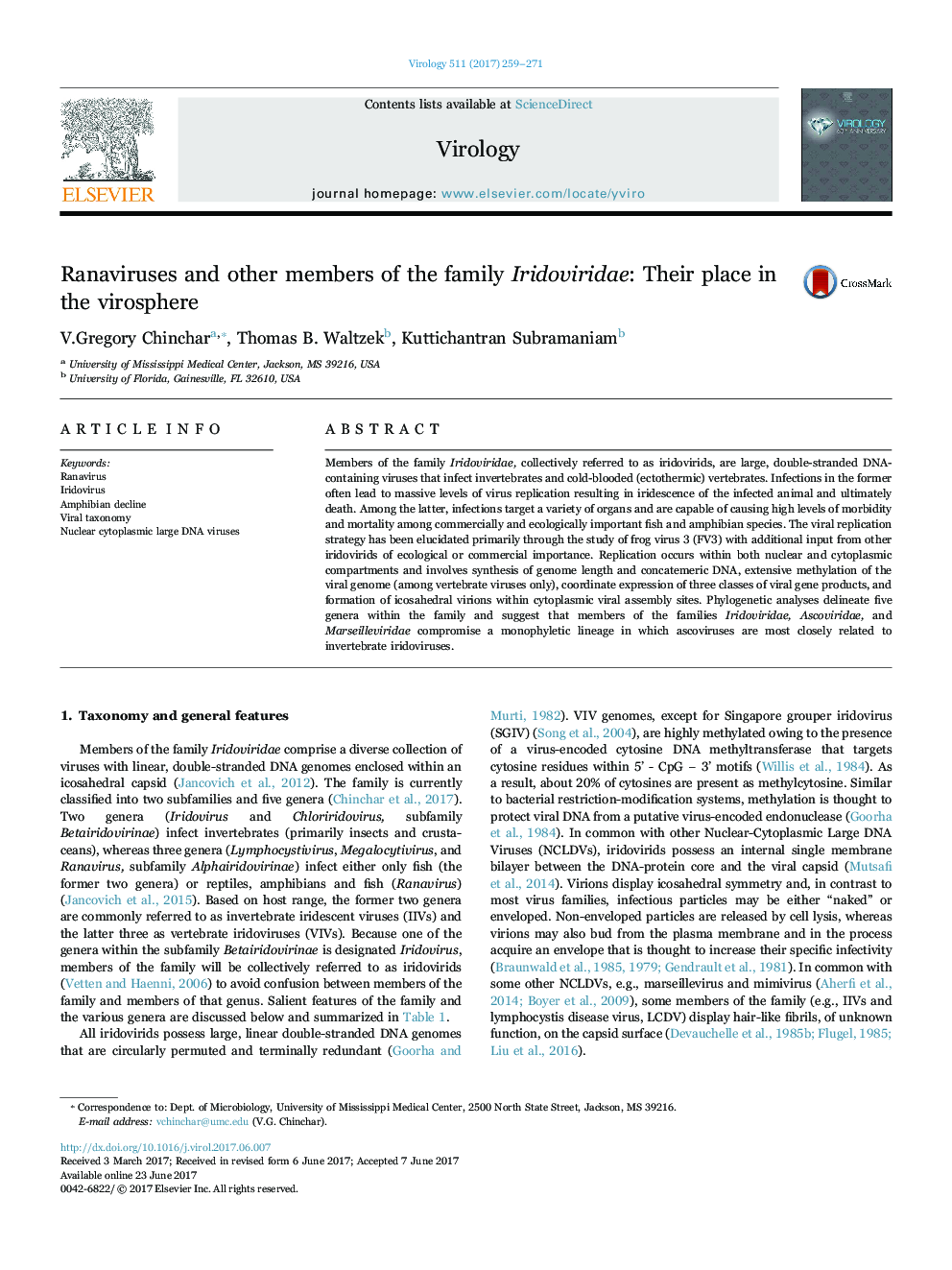| Article ID | Journal | Published Year | Pages | File Type |
|---|---|---|---|---|
| 5674875 | Virology | 2017 | 13 Pages |
â¢Members of the family Iridoviridae adversely impact the health of ecologically-important amphibians and commercially important fish.â¢The viral replication strategy has been elucidated through study of frog virus 3 and other iridovirids.â¢Phylogenetic analysis of over 40 iridovirid genomes supports the division of the family into five genera.â¢Sequence analysis supports the view that ascoviruses and members of the genus Iridovirus share a common ancestor.
Members of the family Iridoviridae, collectively referred to as iridovirids, are large, double-stranded DNA-containing viruses that infect invertebrates and cold-blooded (ectothermic) vertebrates. Infections in the former often lead to massive levels of virus replication resulting in iridescence of the infected animal and ultimately death. Among the latter, infections target a variety of organs and are capable of causing high levels of morbidity and mortality among commercially and ecologically important fish and amphibian species. The viral replication strategy has been elucidated primarily through the study of frog virus 3 (FV3) with additional input from other iridovirids of ecological or commercial importance. Replication occurs within both nuclear and cytoplasmic compartments and involves synthesis of genome length and concatemeric DNA, extensive methylation of the viral genome (among vertebrate viruses only), coordinate expression of three classes of viral gene products, and formation of icosahedral virions within cytoplasmic viral assembly sites. Phylogenetic analyses delineate five genera within the family and suggest that members of the families Iridoviridae, Ascoviridae, and Marseilleviridae compromise a monophyletic lineage in which ascoviruses are most closely related to invertebrate iridoviruses.
